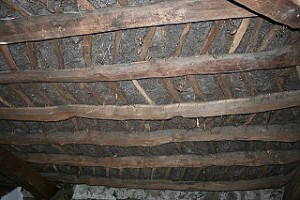From Guest Blogger Lana Hawkins: Advanced Building Materials for More Sustainable Construction

Wool Bricks
Spanish and Scottish researches had an aim to create a material that is sustainable, non-toxic and that can improve the strength of the bricks. That is when they thought of wool bricks. They simply added wool and natural polymer that is found in seaweed to the clay and found a new, 37% stronger brick that has better resistance to the harsh climates. Additionally, these bricks reduce the embodied energy, since they need not be fired like traditional bricks.
Sustainable Wood
Technology can improve anything, even wood. Not even the strongest wood, such as ebony, is strong enough for more sustainable constructions, and that is why a Norwegian company has developed Kebony. This strong and durable wood is non-toxic and completely eco-friendly, and its production process consists of combining the sustainable softwood with natural bio-waste liquid and heat. However, if your project is smaller or does not require such a strong wood, then you can opt for recycled one. Recycled wood actually consists of wood fibers and waste plastics, and National Association of Home Builders believes it is more durable and less toxic than lumber that is made traditionally. Also, since this type of lumber is more resistant to harsh weather conditions and it is more resistant to mold and rot, it is one of the best candidates for building the cladding systems within any structures.
Sustainable Concrete
As a result of consumed energy, every building emits huge amounts of CO2. In order to reduce those emissions into the environment, it is recommended to use sustainable forms of concrete as a building material. Additionally, any kind of recycled material can be added into the mix with concrete, such as crushed glass, wood chips or slag, which only increases the sustainability of the concrete. Not to mention the effective way of recycling other materials, which would otherwise go to waste. As a result, the CO2 emissions will be reduced from 7% to 10% due to the use of concrete. You might not choose to build your house like this, but with the increasing number of sustainable warehouses and business buildings, concrete should be used more often and preserve the environment.
Graphene
Graphene is one of the newest materials made from graphite. It is super-thin and super-strong, and it is one highly efficient conductor of electricity and heat. Even though it has not yet made it in the market, there are beliefs that it can improve solar panels and that it can be used to improve the energy-efficiency and sustainability of buildings. Additionally, some scientists believe that it could be used for bendable devices for communication and for electronic paper, because it is extremely thin, flexible and transparent.
Structural Insulated Panels
Structural Insulated Panels (SIP) look like a sandwich of a layer of foam insulation between the pieces of plywood, cement panels or strand board. This building material can save up to 50% of energy costs in houses, but to some people think these look ugly. Despite their appearance, SIPs are fire resistant and highly energy-efficient, and they can be used for floors, foundations, basements and load-bearing walls. Also, if you are bothered by their look, they can be easily finished by wood, stucco or grain, and bricks and stone can easily be installed on these panels.
The health of our planet is at stake, and we need to do everything in order to help it. That is why technology is working hard on developing new materials that will endure all the conditions and still stand strong over the years.
